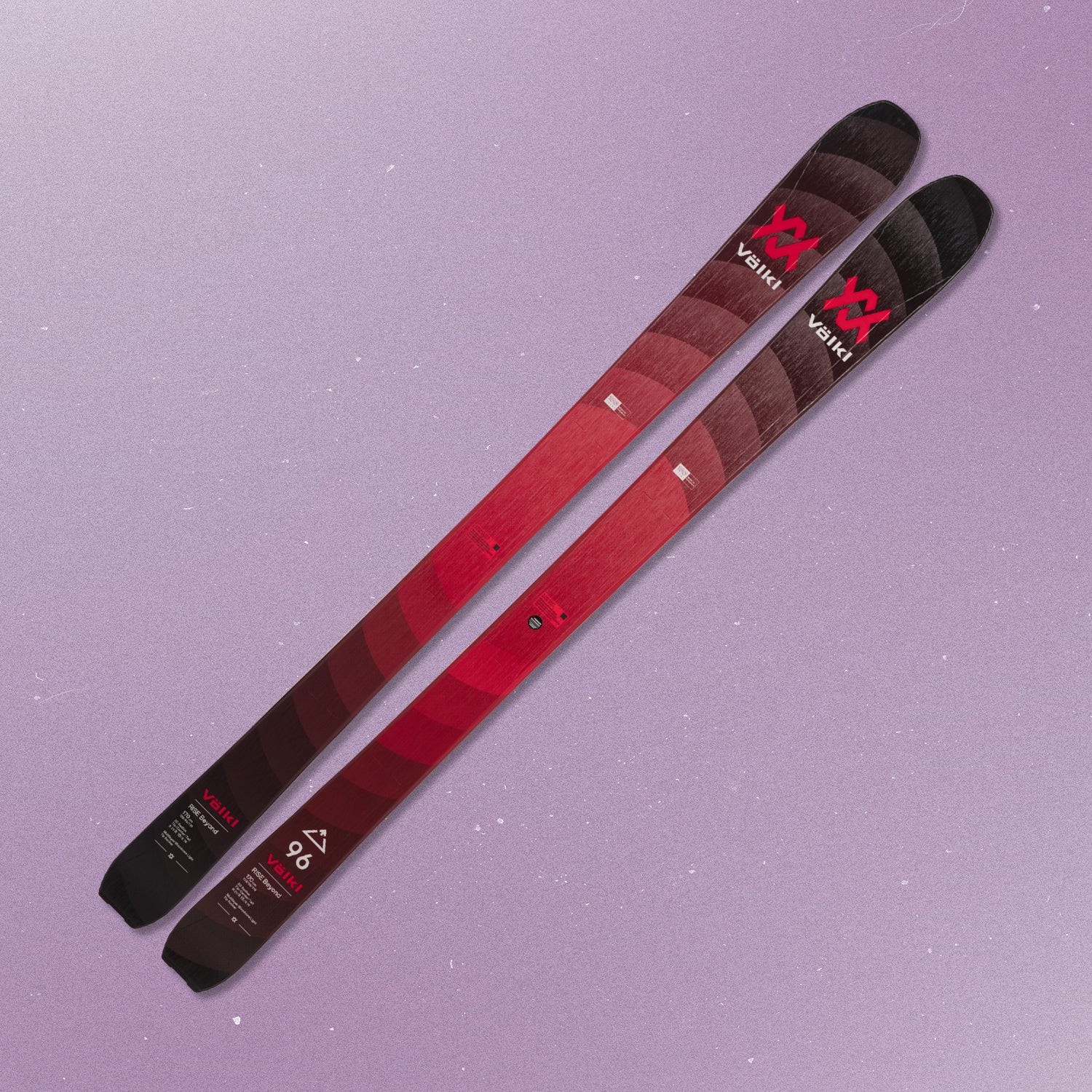This article was first published by .
The Scores (out of 10)
- Crud Performance: 7.6
- Responsiveness: 8.4
- Stability at Speed: 8.4
- ����dzٲ��پ��Dz�:��5.8
- Playfulness: 7.6
- Forgiveness: 7.2
- Versatility: 8
- Quickness: 8.6
The Specs
- Price: $750
- Lengths: 156, 163, 170, 177, 184
- Dimensions: 138-96-119
- Radius: 17
- Weight: 1,262 g (170 cm)
- Level: Intermediate to Expert
In a Nutshell
- Pros: Responsiveness, Stability at Speed
- Cons: Flotation, Forgiveness
“Energetic,” “balanced,” and “dependable” were the words used most often to describe the Rise Beyond 96, thanks to a unique blend of wood in the ski’s DNA: poplar in the edges for stability, paulownia in the center for flexibility, and beech underfoot for strength, durability, and damping. Length- and performance-specific slots are also milled out of the wood core to save weight and soften the flex pattern.
“I was shocked by how hard I could ski this ski with a pin binding on it,” shared SLC dweller Luke Larsen. “I was truly blown away at the strength-to-weight ratio. It’s amazing, bottom line!”
The 3-D sidecut is customized to each available length, providing a longer, open radius at the tips and tails and a tighter curve in the center. This allows you to open up the ski for big turns at high speed with easy steering and maneuverability, then quickly switch to making tighter, agile turns at lower speeds on a shorter radius.
Related: See how the Völkl Rise Beyond 96 stacked up against its competition
“If a racer wanted to become a backcountry skier, this would be his or her ski,” said Aspen Snowmass patroller Mike Britt. He called this model ideal for more prominent, technical terrain.
The Rise Beyond 96 lives up to expectations in spring slush, tight trees, light bumps, and scrappy ski-mountaineer lines. In challenging test conditions, this ski ate up variable, hard snow on open terrain, but some testers noted that it was not wide or damp enough to ski deep, heavy snow.
Related: Ski straps have many unexpected uses in the backcountry. Here are a few of them.


